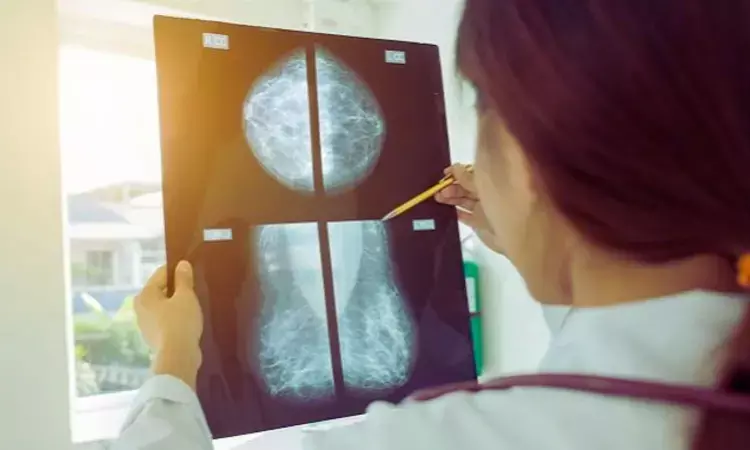- Home
- Medical news & Guidelines
- Anesthesiology
- Cardiology and CTVS
- Critical Care
- Dentistry
- Dermatology
- Diabetes and Endocrinology
- ENT
- Gastroenterology
- Medicine
- Nephrology
- Neurology
- Obstretics-Gynaecology
- Oncology
- Ophthalmology
- Orthopaedics
- Pediatrics-Neonatology
- Psychiatry
- Pulmonology
- Radiology
- Surgery
- Urology
- Laboratory Medicine
- Diet
- Nursing
- Paramedical
- Physiotherapy
- Health news
- Fact Check
- Bone Health Fact Check
- Brain Health Fact Check
- Cancer Related Fact Check
- Child Care Fact Check
- Dental and oral health fact check
- Diabetes and metabolic health fact check
- Diet and Nutrition Fact Check
- Eye and ENT Care Fact Check
- Fitness fact check
- Gut health fact check
- Heart health fact check
- Kidney health fact check
- Medical education fact check
- Men's health fact check
- Respiratory fact check
- Skin and hair care fact check
- Vaccine and Immunization fact check
- Women's health fact check
- AYUSH
- State News
- Andaman and Nicobar Islands
- Andhra Pradesh
- Arunachal Pradesh
- Assam
- Bihar
- Chandigarh
- Chattisgarh
- Dadra and Nagar Haveli
- Daman and Diu
- Delhi
- Goa
- Gujarat
- Haryana
- Himachal Pradesh
- Jammu & Kashmir
- Jharkhand
- Karnataka
- Kerala
- Ladakh
- Lakshadweep
- Madhya Pradesh
- Maharashtra
- Manipur
- Meghalaya
- Mizoram
- Nagaland
- Odisha
- Puducherry
- Punjab
- Rajasthan
- Sikkim
- Tamil Nadu
- Telangana
- Tripura
- Uttar Pradesh
- Uttrakhand
- West Bengal
- Medical Education
- Industry
Breast arterial calcification on mammography could identify women at high risk of CVD in future: Study

USA: Breast arterial calcifications (BAC) on a screening mammogram may identify women at potentially increased risk of future cardiovascular disease (CVD) without radiation exposure and additional cost, a recent study published in Clinical Imaging has found.
In the cross-sectional study of women who underwent both screening mammography and cardiac computed tomographic angiography, BAC was found in 18% of women.
Researchers found links between such calcifications and older age, younger age at first birth, diabetes, parity, and hypertension in women who underwent both screening mammography and cardiac CT angiography (CCTA).
Additionally, they found that when neither BAC nor coronary arterial calcifications were present, the estimated 10-year risk of developing atherosclerotic CVD was lowest, whereas, the highest risk was observed when both calcifications were present.
Breast arterial calcifications are incidentally observed on mammograms, yet there is no clarity on their implications. Shadi Azam, Department of Population Health Sciences, Weill Cornell Medicine, New York, USA, and colleagues investigated reproductive, lifestyle, and cardiovascular determinants of BAC in women undergoing mammography screening. Further, they investigated the relationship between BAC, coronary arterial calcifications (CAC), and estimated 10-year atherosclerotic CVD (ASCVD) risk.
In the cross-sectional study, the researchers obtained reproductive history and CVD risk factors from 215 women aged 18 or above who underwent mammography and CCTA within 2 years between 2007 and 2017 at a hospital.
BAC was divided as binary (present/absent) and semi-quantitatively (mild, moderate, severe). CAC was investigated using the Agatston method and recorded as binary (present/absent).
Adjusted odds ratios (ORs) were calculated, accounting for age as a confounding factor. ASCVD risk over ten years was calculated using the Pooled Cohort Risk Equations.
The researchers reported the following findings:
- Older age, systolic and diastolic blood pressures, higher parity, and younger age at the first birth (≤28 years) were significantly associated with greater odds of BAC.
- Women with both BAC and CAC had the highest estimated 10-year risk of ASCVD (13.30 %).
- Those with only BAC (8.80 %), only CAC (5.80 %), and no BAC or CAC (4.40 %) had lower estimated 10-year risks of ASCVD.
- The researchers detected no association between the presence of BAC and CAC.
The researchers highlighted that finding links between the mammographic presence of BAC and cardiovascular disease risk could help better manage patients without needing additional exposure to radiation and could help save on costs.
“There is a need for further research in large cohorts with longer follow-up periods to delineate better the association between [calcification] burden and CVD outcomes and to establish the clinical utility of reporting breast arterial calcifications detected through mammography screening,” the researchers wrote.
Reference:
Azam, S., Tamimi, R. M., Drotman, M. B., Babagbemi, K., Levy, A. D., & Peña, J. M. (2024). Assessing breast arterial calcification in mammograms and its implications for atherosclerotic cardiovascular disease risk. Clinical Imaging, 110129. https://doi.org/10.1016/j.clinimag.2024.110129
Dr Kamal Kant Kohli-MBBS, DTCD- a chest specialist with more than 30 years of practice and a flair for writing clinical articles, Dr Kamal Kant Kohli joined Medical Dialogues as a Chief Editor of Medical News. Besides writing articles, as an editor, he proofreads and verifies all the medical content published on Medical Dialogues including those coming from journals, studies,medical conferences,guidelines etc. Email: drkohli@medicaldialogues.in. Contact no. 011-43720751


